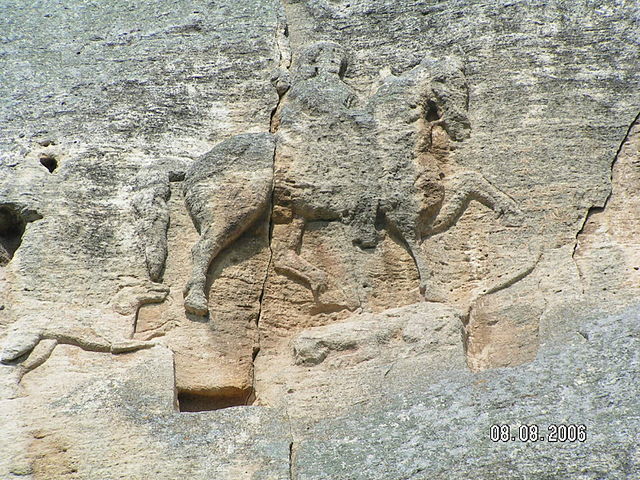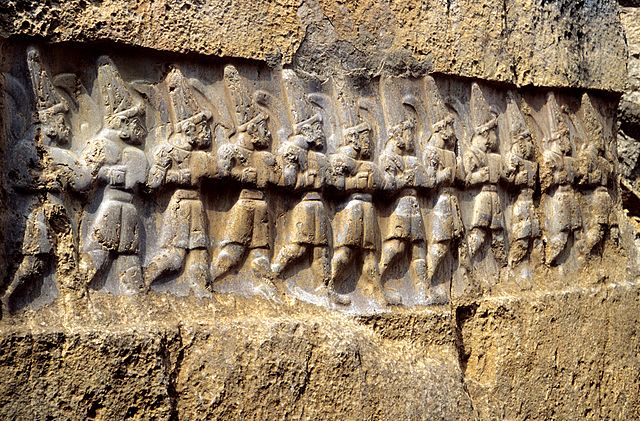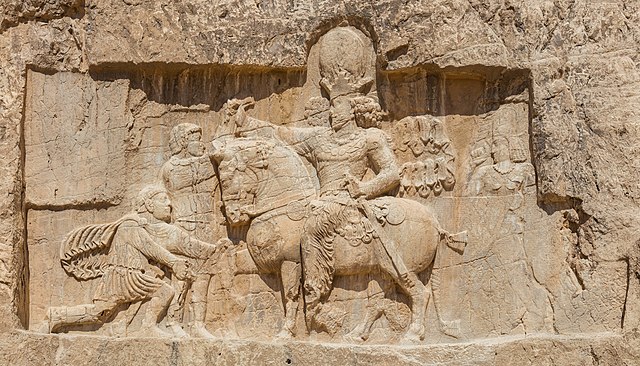The Madara Rider or Madara Horseman is a large early medieval rock relief carved on the Madara Plateau east of Shumen in northeastern Bulgaria, near the village of Madara. The monument is dated to the very late 7th or more often the very early 8th century, during the reign of the Bulgar Khan Tervel. In 1979, the monument was listed as a UNESCO World Heritage Site.
The Madara Rider
A wider view of the rock with Madara Rider.
A rock relief or rock-cut relief is a relief sculpture carved on solid or "living rock" such as a cliff, rather than a detached piece of stone. They are a category of rock art, and sometimes found as part of, or in conjunction with, rock-cut architecture. However, they tend to be omitted in most works on rock art, which concentrate on engravings and paintings by prehistoric peoples. A few such works exploit the natural contours of the rock and use them to define an image, but they do not amount to man-made reliefs. Rock reliefs have been made in many cultures throughout human history, and were especially important in the art of the ancient Near East. Rock reliefs are generally fairly large, as they need to be in order to have an impact in the open air. Most of those discussed here have figures that are over life-size, and in many the figures are multiples of life-size.
Reclining Buddha at Gal Vihara, Sri Lanka. The remains of the image house that originally enclosed it can be seen.
Naram-Sin of Akkad, reigned from c. 2254 BC, Qaradagh Mountain, Sulaymaniyah, Iraq
Hittite deities at Yazılıkaya
The triumph of Shapur I over the Roman Emperor Valerian, and Philip the Arab, Naqsh-e Rustam.






